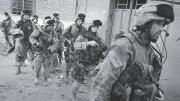"Little known and little used," the Collection of Historical Scientific Instruments will become, in the expectations of its new curator, Sara Schechner '79, Ph.D. '82, the heart of "a center for research and teaching about the material culture of science." What she calls one of the world's great collections of such material--in the company of celebrated collections at Oxford and Cambridge--now is housed in cramped basement quarters at the Science Center and is underemployed. In his annual letter to members of the Faculty of Arts and Sciences last winter, Dean Jeremy R. Knowles announced a planned addition to the Science Center, and it is to this new space that the old instruments will move, perhaps in 2002.
While architects' plans for the addition had not been released as this issue went to press, they are said to call for three new stories on the east wing of the building, running parallel to Oxford Street, with the same footprint as the present single story. In addition, some space in the interior open courtyard of the building will be given to a glass enclosure directly across from the Greenhouse Café. The project will cost about $12 million. Some of the new space will house offices for the Department of the History of Science, already resident in the building, although the exact distribution of space among the users evidently has not yet been determined.
The instruments collection consists of 20,000 artifacts and vast archival resources testifying as to how the microscopes, quadrants, galvanometers, Magdeburg hemispheres, variation compasses, and so on were acquired, who used them in what research, and what students made of the lectures they listened to about them. After a fire in Harvard Hall in 1764 destroyed the beginnings of a collection, Benjamin Franklin, among others, went busily to work sending the latest equipment from Europe to rebuild Harvard's holdings, which have accreted ever since.
Schechner says that her first undertaking will be to more thoroughly identify and catalog what's in the collection. The collection needs a website, she thinks, with a searchable inventory and on-line exhibits. She means to promote outreach not just to scholars and students at Harvard and elsewhere, but to the local lay community. She envisions programs that might teach school children how to measure the altitude of stars and calculate the circumference of the earth and other programs to teach Harvard students hands-on museum skills as they learn communication through the art of exhibit design. In short, she relishes the thought of gracious exhibition space, with attendant classrooms and a conservation area, in the intellectual midst of a lively faculty of the history of science.
As a sophomore studying in that field, she heard I. Bernard Cohen '37, Ph.D. '47, now Thomas professor of the history of science emeritus, lecture about some of the notable instruments in Harvard's cupboard. He urged curious students to visit the collection, then in Allston Burr Hall. Schechner ventured there one day and was warmly greeted by the then curators: two men of generosity, aplomb, and distinctive habits. David Pingree Wheatland '22 liked to wear lumberjack shirts and was occasionally mistaken for the janitor. Ebenezer Gay '54 smoked a pipe among the museum holdings and drank tea of mysterious composition-- perhaps, Schechner speculated, an infusion of pipe tobacco.
"I didn't run away," she says, and soon she was working as a sort of apprentice in the collection, repairing electromagnetic devices. She earned master's and doctoral degrees from Cambridge and Harvard in the history and philosophy of science. She has been curator of the History of Astronomy Collection at the Adler Planetarium in Chicago. She has taught at Sarah Lawrence and the University of Maryland at College Park and has been scholar-in-residence at the American Institute of Physics and a research fellow at the National Museum of American History. "So many letterheads, but so little income!" she lamented in her College class's twentieth-reunion report.
To help redress that situation, she founded and became principal of Gnomon Research, Curators on Call & Outreach Professionals. She is the author of the well-received Comets, Popular Culture, and the Birth of Modern Cosmology, published by Princeton University Press in 1997, and is at work on a volume about the relationships among sundials, society, and social change. As the Wheatland curator of the Collection of Historical Scientific Instruments, she'll oversee many dials, along with telescopes, astrolabes, and whatnot in profusion.





